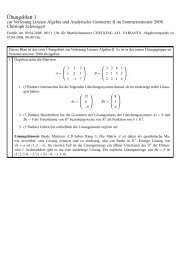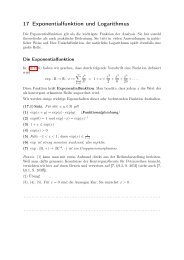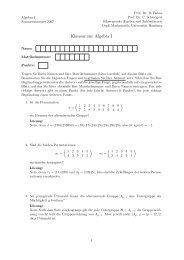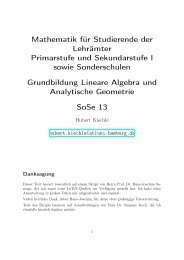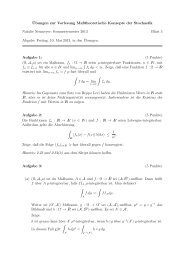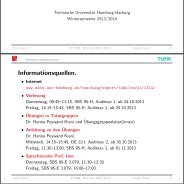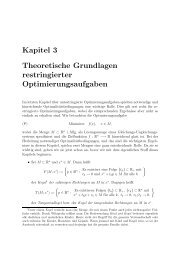pdf file
pdf file
pdf file
Create successful ePaper yourself
Turn your PDF publications into a flip-book with our unique Google optimized e-Paper software.
The transpose is a map m ∗ x : H ∗ → H ∗ , for each x ∈ H. One checks graphically that it<br />
defines the structure of a left H-module on H ∗ . We write<br />
h ⇀ h ∗<br />
∈ H ∗<br />
for the image of h ∗ ∈ H ∗ under the left action of h ∈ H. Thus<br />
〈h ⇀ h ∗ , g〉 = 〈h ∗ , gh〉 for all g ∈ H .<br />
One can perform this construction quite generally for an algebra in a rigid monoidal<br />
category. In this case, one has to take the left dual for this construction to work. This is<br />
again immediately obvious from the graphical proof.<br />
3. In the same vein, the transpose of left multiplication defines a right action of H on H ∗ .<br />
We write<br />
h ∗ ↼ h ∈ H ∗<br />
for the image of h ∗ ∈ H ∗ under the right action of h ∈ H. Thus<br />
〈h ∗ ↼ h, g〉 = 〈h ∗ , hg〉 for all g ∈ H .<br />
One can perform this construction quite generally for an algebra in a rigid monoidal<br />
category. In this case, one has to take the right dual for this construction to work. This<br />
is again immediately obvious from the graphical proof.<br />
4. Since the antipode is an antialgebra morphism, we can use it to turn left actions into<br />
right actions and vice versa.<br />
In this way, we get a left action of H on H ∗ by<br />
It obeys<br />
(h ⇁ h ∗ ) := (h ∗ ↼ S(h))<br />
〈h ⇁ h ∗ , g〉 = 〈h ∗ , S(h)g〉 for all g ∈ H .<br />
Similarly, we get a right action of H on H ∗ by<br />
(h ∗ ↽ h) := (S(h) ⇀ h ∗ )<br />
with<br />
〈h ∗ ↽ h, g〉 = 〈h ∗ , gS(h)〉 for all g ∈ H .<br />
The following Lemma will be important:<br />
Lemma 3.1.11.<br />
Let H be a finite-dimensional Hopf algebra. Then H ∗ with right H action ↽ and right coaction<br />
ρ is a Hopf module.<br />
Proof.<br />
We have to show that<br />
ρ(f ↽ h) = (f (0) ↽ h (1) ) ⊗ (f (1) ↽ h (2) )<br />
for all f ∈ H ∗ and h ∈ H. By the definition of the coaction ρ, this amounts to showing for all<br />
p ∈ H ∗ and x ∈ H:<br />
〈p, x (1) 〉〈f ↽ h, x (2) 〉 = 〈f (0) ↽ h (1) , x〉〈p, f (1) ∙ h (2) 〉 .<br />
57






